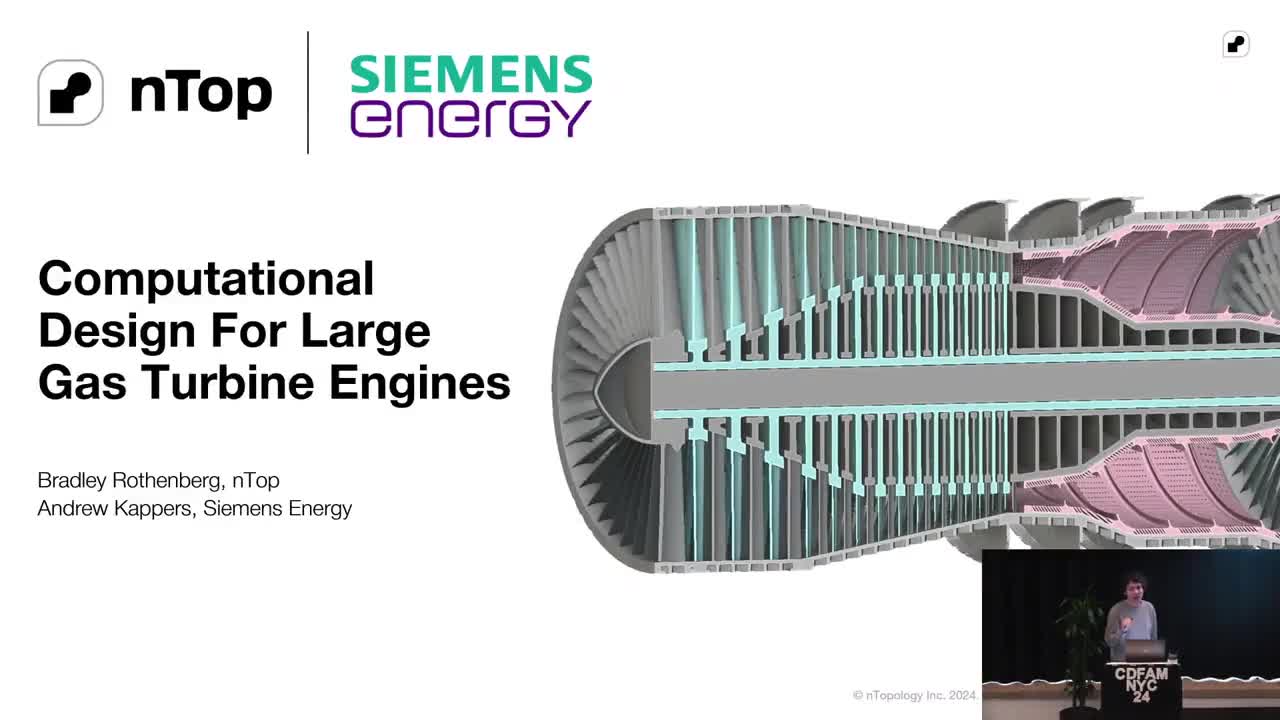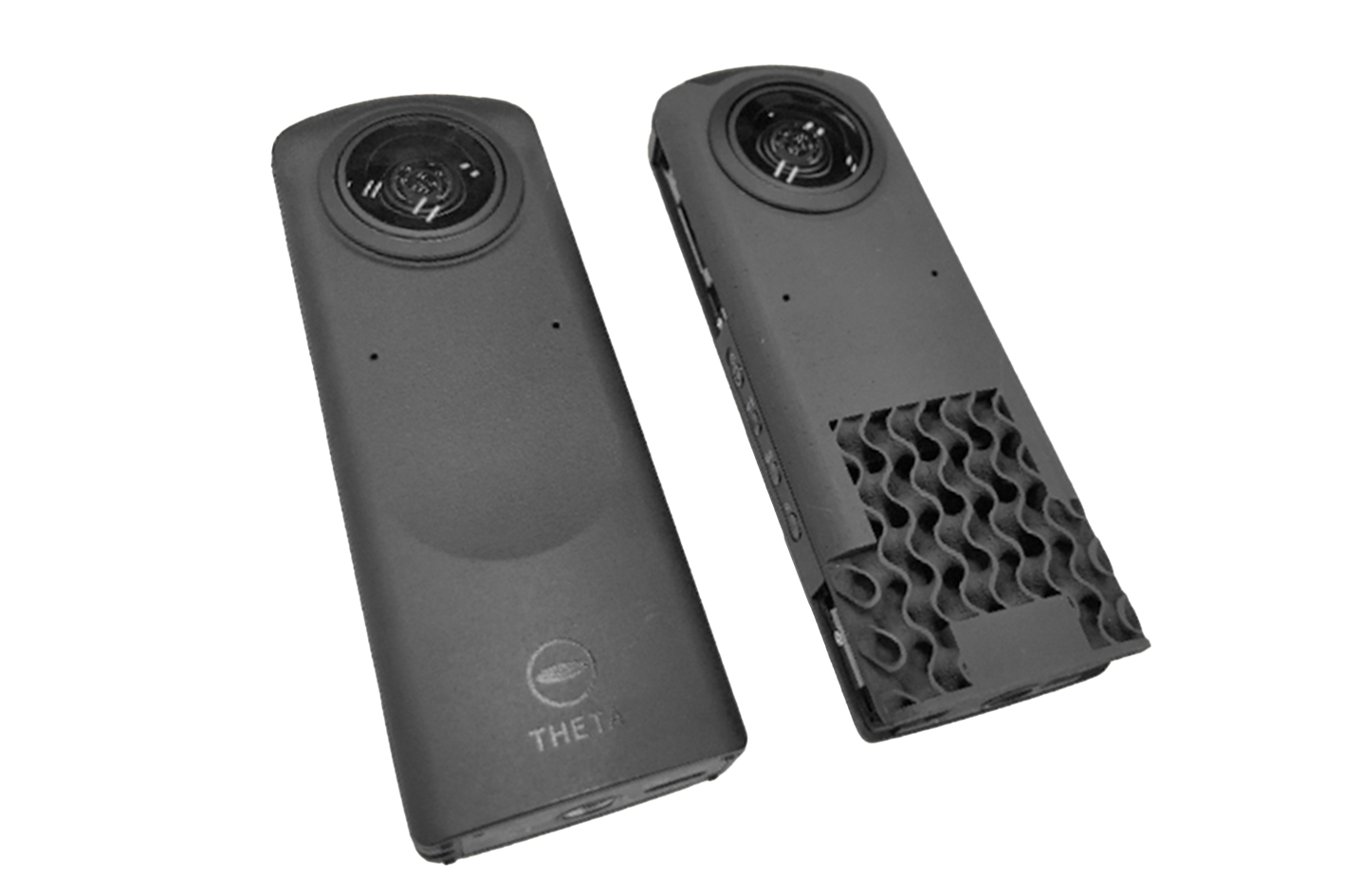Designing a 3D printed, elastomeric lattice wrist rest
Written by Tristan Antonsen | Application Engineer, Fast Radius
Published on October 30, 2020
While additive manufacturing enables a totally new era of complex parts, it is still necessary to have a robust toolset that allows an engineer, designer, or product team to fully utilize these new manufacturing capabilities. Things like complex lattice design, generative design, and simulation are a must. Read further to see how we are enabling our customers and partners.
My name is Tristan Antonsen, and I’m an Application Engineer at Fast Radius. We work to bring manufacturing solutions to customers from all industries across a wide range of traditional and additive manufacturing technologies such as Carbon DLS and HP Multi Jet Fusion (MJF). Modern, production-grade additive manufacturing makes it possible to realize complex parts far beyond what is possible with legacy manufacturing methods. At Fast Radius, we embrace these capabilities during new product development with open arms. Our knowledge of additive manufacturing, engineering, and product development combined with nTop allows us to bring our partners an entirely new class of cutting-edge products.
An example of this is in the development of a wrist rest 3D printed in an elastomeric material with the Carbon DLS process. We were excited for the opportunity to use this as an illustrative example of our New Product Development (NPD) process for designing complex 3D printed parts and it’s a perfect opportunity to show the power of nTop.

An ergonomic wrist rest featuring an elastomeric lattice structure designed with nTop.
While additive manufacturing enables a totally new era of complex parts, it is still necessary to have a robust toolset that allows an engineer, designer, or product team to fully utilize these new manufacturing capabilities. nTop’s combination of cutting-edge geometric manipulation and functionalities such as complex lattice design, generative design, and simulation (to name a few), provides users with the tools they need to send their parts to print.
nTop’s unique representation of geometries through implicit modeling makes it possible to rapidly generate extremely complex, data-driven geometries in real time. This is traditionally an enormous bottleneck in other 3D modeling softwares that rely on BREP, NURBS, or mesh representations of geometries. Whereas normally a lattice might contain thousands of individual surfaces or a mesh with millions of polygons, it can be represented as a single solid body in nTop.

Visually comparing a discrete mesh representation of a volume (left) with nTop’s solid, implicit representation (right).
Lattice structures 3D printed in elastomeric materials are a great option for foam replacement due to the ability of tuning the mechanical response as well as having a high printability with resin-based printing processes. nTop’s latticing toolset makes it extremely fast to generate and thicken a variety of lattices that fill geometry.

A scalar field generated from a tilted cylinder is used to provide a thickness gradient of the lattice beams, providing a choice between a stiff and soft wrist rest with a smooth transition between.
Generating several choices of skins to envelop the lattice is simple, whether the skin is a surface lattice, a solid skin on top, or a combination of both. Depending on environmental factors or the user’s preference, a breathable skin may be desirable. The block system in nTop makes it simple to toggle between options for visual comparison.

Comparing different ways of enveloping the volume fill lattice.
In industrial design, product semantics allow the form of an object to inform the user of the qualities to expect from them. Using nTop, ramped textures and perforations are easy to implement, offering a simple way of adding elements of visual communication to the user as well as helping base functionality. In this case, the ramped voronoi pattern and perforations mirror the internal stiffness gradient of the lattice.

Using aesthetics to communicate what behavior the user should expect from the wrist rest.
One of the most drastic increases in capability when moving to nTop from other software is the speed and confidence with which one can perform boolean operations. Whether the booleans are adding perforations, enabling serialization, or combining multiple bodies into one homogenous part, the operations work every single time -- no need to worry about coincident mesh faces or open volumes.


Complex boolean operations allow solid, homogeneous parts.
As is briefly illustrated with this wrist rest, nTop enables rapid exploration of a design space with real-time modeling, analysis, and comparison. Designing parts with high geometric complexity is easily attainable and many of the bottlenecks seen in traditional CAD software with booleans and meshes are a thing of the past.
Hopefully you’re inspired to try these tools out yourself, and we know there is a long road of exciting products we at Fast Radius are looking forward to making possible utilizing nTop.

Tristan Antonsen
Application Engineer, Fast Radius
Tristan Antonsen is an Application Engineer at Fast Radius, working throughout the product development process from conception to production. Focusing primarily on additive manufacturing, but maintaining a technology-agnostic approach, he works with customers to optimize their parts for the manufacturing technology best-suited to each individual application. He studied Mechanical Science and Engineering and Art and Design at the University of Illinois where he developed a user-centered approach to design, caring deeply about both the engineering and the industrial design of products.
Related content
- VIDEO
nTop Siemens Energy at CDFAM NYC 2024

- VIDEO
nTop CDS 2024: Exploring the cutting edge of computational design with Matthew Shomper

- VIDEO
nTop CDS 2024: How COBRA Golf created the LIMIT3D irons

- CASE STUDY
Cobra Golf designed their LIMIT3D irons 50% faster with nTop

- CASE STUDY
Designing a cooler camera housing
